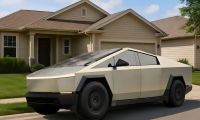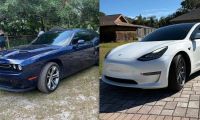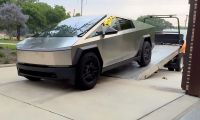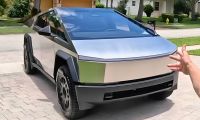There’s an old baseball gag about a baseball legend (Casey Stengel) who said it was “deja vue all over again.” He discussed baseball situations during his reign as the New York Yankees manager.
An Old Adage That Proves True
Believe it or not, the saying can be applied to the automotive world as it looks like one of the firms that took over for the new-defunct Takata Manufacturing Corp. is trying to fight an order that would lead to the recall of 67 million airbag inflators that continue the root cause of the Takata airbag inflator scandal and recall. The scandal and recall drove Takata, which in the 2000s was the number two airbag maker, bankrupt. ARC Automotive has taken over for the bankrupt Japanese manufacturing firm.
Ford recalls 2004-2006 Ranger Pickups For Airbag Work
The National Highway Traffic Safety Administration (NHTSA) ordered up to 55 million airbag inflator units in the U.S. as part of history's most significant safety recall. During the safety agency’s probe, it leveled two of the most significant fines against a manufacturer in history -- $330 million –and it also resulted in the recall order that ultimately drove Takata under.
The issues that drove Takata out of business revolved around the choice of propellant used in its airbags, the manufacturing sites where the airbags were built, the environment in which they were built, the problems caused by the faulty airbag inflators, and the like.
Let’s look at the last issue first – problems. Takata realized its problem in 1996 when it commissioned an internal study of its airbag inflator design. The design team took apart many airbag inflators, and a pattern emerged. The team found that the airbag inflators were poorly manufactured, often filled with dirt and debris, and whose propellant was often degraded by moisture invasion. The engineering team suggested significant changes, but Takata management looked at the expense and stayed with its established lines.
Takata Deep-Sixes It Own Safety Study
Moving to the propellant used, the engineering study team recommended new, more stable propellants. There was a problem, and that was that the new propellants cost more money. Plus, the significant changes needed to make them also raised costs considerably. Though the engineering teams devised plans that would have resulted in safe, stable airbag inflators, Takata deep-sixed the study in 1998 as it chose to stay with the cheaper but flawed airbag inflators, ultimately leading to the biggest safety recall in history. In Takata’s defense, the manufacturer did try to make at least four running changes to the airbag inflator design. Still, they also returned to the original track as housing materials, housing, inflators, propellant, and manufacturing.
BMW Recalls 90K Vehicles; Tells Owners To Park Them
Takata remained with ammonium nitrate as its inflator explosive of choice. The airbag system applied a quick electrical charge to the propellant when deployed. They blasted out of their housings for the milliseconds needed for protection, then deflated as quickly.
Much of the problem with Takata airbags came from the corporation’s essential manufacturing plants in Mexico. They were located in a hot, humid climate and performed best in that environment. Indeed, that was a key finding of NHTSA’s probes in 2016 and 2017. The agency began its probes in late 2014 and issued the first of several recall notices in 2015. As the recall evolved, it became apparent that more than one recall was needed because it involved millions of inflators and almost an equal number of vehicles. In fact, in 2017, NHTSA worked with the companies that were taking over the recall from a reeling Takata to establish a sensible schedule for the completion of this project. It was to have been completed about now over the six-year schedule. The recall caught every major manufacturer in its grasp, ultimately hitting 20 manufacturers from Ford and GM to Honda, Toyota, Hyundai, Chrysler, Kia, Nissan, and more.
The key findings of the NHTSA probe and recall were the same for every inflator. Though Takata tried to change this, they were still locked into the same manufacturing plants, propellant, and lack of quality control. As noted, the plants were in a hot, humid climate and were built in that climate. The inflators also performed best in those conditions, or they would have performed best, but they were flawed by dirt and debris, which fell into and were sealed into many of the housings. No one knew that the sealing was incomplete because of the detritus that fell into the housing, allowing moisture to infiltrate the housings. The moisture caused the ammonium nitrate propellant to spoil. The spoiled propellant, over time, became stronger, not weaker, and led to the reasons for the recall. The housings had this habit of exploding as the propellant charge had become too strong. The housings burst on deployment, and the metal housings then became shards of shrapnel that scythed through the interiors of cars and trucks across the globe.
Ford To Recall Popular Pickup Model
The Takata recall scandal has been blamed for more than 30 deaths across the globe, including more than 23 in the U.S. and another 15 or so outside the U.S. Additionally; the recall scandal has been blamed for more than 400 serious injuries across the globe. Finally, the recall scandal involved more than 75 million inflators across the globe that were located in 55 million vehicles.
Scope Of The Takata Recall Outlined
The NHTSA ordered a regional recall that emphasized the warm, humid areas of the country. Notably, the recall covered the southern, western, and southeast states. Each of these areas is hot and humid at times during the year. Further, it involved Hawaii, Guam, Saipan, and the American Pacific Trust territories. Also, there were clusters of vehicles found – and still being found today – that included 2004-2006 Ford Ranger pickups, 2001-2003 Honda Civics and Accords, and now 2003-2006 BMWs which are also under a do not drive order.
Trying to meet the recall’s changing needs and keep its costs as low as possible, Takata finally gave up and declared bankruptcy six years ago. That hasn’t stopped the recall scandal from going on. Several companies have come in to try to meet the recall needs of this safety issue. One of them is ARC Automotive of Knoxville, Tenn. It is facing a demand from the NHTSA to recall millions of airbag inflators.
In sheer numbers, the NHTSA has demanded that ARC recall 67 million inflators in the U.S. because they suffer from the same problems that Takata-made inflators have had. The NHTSA warns that ARC’s inflators can explode and kill vehicle passengers. According to the Associated Press (AP), at least two drivers have been killed in the U.S. and Canada, and another seven have been seriously injured as the inflators have exploded, hurling shrapnel throughout the interior of vehicles.
The safety agency issued a letter Friday telling ARC, “it has tentatively concluded – after an eight-year investigation– that ARC inflators for the driver and front passenger positions have a safety defect.” The recall would include many of the 284 million vehicles on the country's roads today. Some of these vehicles have ARC inflators for the passenger and driver.
Stephen Ridella, director of the safety agency’s Office of Defects investigation, told ARC in a letter ..link.. that the “Airbag inflators that project metal fragments into vehicle occupants, rather than properly inflating the attached airbag, create an unreasonable risk of death and injury.” ARC responded, “No defect exists in the inflators, and any problems are related to isolated manufacturing issues.”
In a combative statement this weekend, ARC said, “We disagree with the NHTSA’s new sweeping request when extensive field testing has found no inherent defect. ARC now faces the potential for a court hearing on this issue that could force ARC to issue the recall.
GM Recalls Nearly 1M Vehicles With Airbag Problems
Meantime, NHTSA documents issued this weekend showed that General Motors recalls “nearly 1 million vehicles equipped with ARC inflators. The recall covers 2014-2017 Buick Enclave, Chevrolet Traverse, and GMC Acadia SUVs.”
The automaker says an inflator explosion “may result in sharp metal fragments striking the driver or other occupants, resulting in serious injury or death.” Owners will receive letters starting June 25 telling them that “no fix is available yet.” They will get further letters when the replacement parts are ready. GM told the AP that it “will offer ‘courtesy transportation’ on a case-by-case basis to owners who fear driving vehicles that are part of the recall.” The automaker says it has issued this recall, “which expands previous actions, out of an abundance of caution and with the safety of our customers as our highest priority.”
GM described one of the two deaths attributed to this newest recall as that of a mother of 10. She was killed “in what appeared to be an otherwise minor crash in Michigan’s Upper Peninsula in the summer of 2021. A police report shows “that a metal inflator fragment hit her neck” in the crash that involved a 2015 Chevy Traverse. Indeed, at least a “dozen automakers” are using faulty inflators.
The agency’s Ridell told ARC that “welding debris from the manufacturing process can block an ‘exit orifice’ for gas released to fill the airbag in a crash. Any blockage can cause pressure to build in the inflator, blowing it apart and” cause metal fragments to scythe through the interior.
An upset Steve Gold, ARC vice president of product integrity, told the NHTSA that its position “is not based on any objective technical or engineering conclusion about a defect “’ but rather conclusory statements regarding hypothesized blockage of the inflator orifice from “’ weld slag.’”
ARC Disputes NHTSA Finding
In his letter to the federal safety agency, Gold wrote, “welding debris has not been confirmed as the cause in any of the seven inflator ruptures in the U.S. ARC contends that only five have ruptured while in use, and that “’ does not support a finding that a systemic and prevalent defect exists in this population.
Gold continued, “Manufacturers must do recalls, no equipment manufacturers like ARC. NHTSA’s recall demand exceeds the agency’s legal authority.”
Last year, ARC was challenged in a lawsuit over using ammonium nitrate as a “secondary propellant to inflate the airbags.” The propellant is “pressed into tablets that can expand and develop microscopic holes if exposed to moisture. Degraded tablets have a larger surface area, causing them to burn too fast and ignite,” an enormous explosion. “The explosion can blow apart a metal canister housing this chemical, sending metal shards into the cabin. Ammonium nitrate, used in fertilizer and as a cheap explosive, is so dangerous that it can burn too fast even without moisture present,” the lawsuit maintains,
Lawsuit Filed Over Inflators
The plaintiffs say that “ARC inflators have blown apart seven times on U.S. roads and two other times in testing by ARC.” There have “been five limited recalls of the inflators that totaled about 5,000 vehicles, including three by GM.”
Marc Stern has been an automotive writer since 1971 when an otherwise normal news editor said, “You're our new car editor," and dumped about 27 pounds of auto stuff on my desk. I was in heaven as I have been a gearhead from my early days. As a teen, I spent many misspent hours hanging out at gas stations (a big thing in my youth) and working on cars. From there on, it was a straight line to my first column for the paper "You Auto Know," an enterprise I handled faithfully for 32 years. Only a few people know that I also handled computer documentation for most of my earnings while writing YAN. My best writing, though, was always in cars. My work has appeared in Popular Mechanics, Mechanix Illustrated, AutoWeek, SuperStock, Trailer Life, Old Cars Weekly, Special Interest Autos, etc. You can follow me on: Twitter or Facebook.












